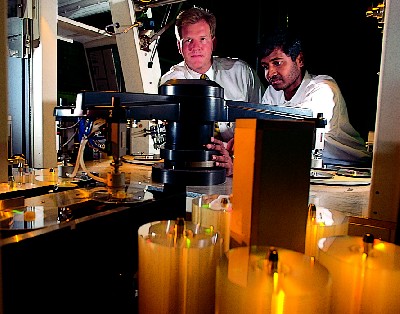
Apart from the high quality supply of compressed air, what any pneumatic cylinder or actuator requires is a valve to regulate the rate at which air enters the cylinder; and what every valve requires is a means of making it open and close at the desired time. The simplest, and oldest, type of pneumatic cylinder uses on/off switching whereby the valve has only two positions during operation — fully open or fully closed - representing respectively a released or a pressurised cylinder. Known as ‘bang-bang’ control for obvious onomatopoeic reasons, this type of operation involves valves being closed to build pressure in the system at a constant rate, then snapped open when the system reaches the required pressure. The resulting output motion is clearly far from smooth and the shock and vibration from such systems can eventually damage the equipment they are controlling.
With the advent of electronics, however, valve control has become far more flexible then simple open/close operation. Electronically controlled proportional valves can now respond to control signals to produce smoother and more precise movement of the cylinder and final element. In a similar fashion, pressure regulators are also now available that use electronic proportional control to maintain a steady output of compressed air through the pneumatic system.
Unlike a conventional regulator, where the desired pressure is usually set manually via a control knob on the unit and there is no mechanism for comparing set values with actual output, a proportional pressure regulator incorporates an element of feedback control. An integrated pressure sensor constantly measures the output pressure and compares it with the set point. In the event of any deviation between the two, the proportional regulator immediately corrects the actual output value by using its electronic control system to actuate integral solenoid valves in the unit.
Proportional regulators now offer users and system builders the ability to incorporate accurate pressure control into a fully integrated control system. Apart from the operational benefits this brings to the host of applications that require precise pressure control — everything from automotive paint spraying, through web tensioning in the paper and converting industries, to pneumatically controlled valves in the chemical and process industries — there are other ancillary benefits to be gained in terms of energy efficiency and savings.
Some estimates suggest that around 16% of a typical factory’s energy consumption can be attributed to compressed air usage. Significant energy savings can clearly be made through the introduction of more energy-efficient compressors, but savings can also be made within the pneumatic systems themselves. Surveys by the US Department of Energy have shown that a typical compressed air system uses only around 50% of its air supply for actual production; the rest is either wasted or lost to leaks. Reducing or eliminating leaks should be a prerequisite for efficient operation and can largely be looked upon as a ‘good housekeeping’ task. Reducing waste — or using air more effectively — on the other hand is a function of good control, as offered by electronic proportional regulators.
The energy efficiency of pneumatic systems can be further improved following the introduction of new generations of valves. These standard ISO solenoid valves typically require 20% less power for their operation than earlier ISO models, with spool seals having a far lower breakaway force.
Although such energy savings will add to any factory’s drive towards reducing its overall consumption, perhaps the main benefits of these new generations of valves will come from their much improved ability to interface with other control technology.
The interfacing of pneumatics with electronic control technology promises even further improvements in automation efficiency and increased productivity. On-line diagnostics of systems and components can improve maintenance operations; continuous monitoring of system air use can help further reduce waste and leakage; while the new modular designs of valves, with their new seal technology and lightweight materials, can lower energy consumption even further.
For further information please visit: www.parker.com





